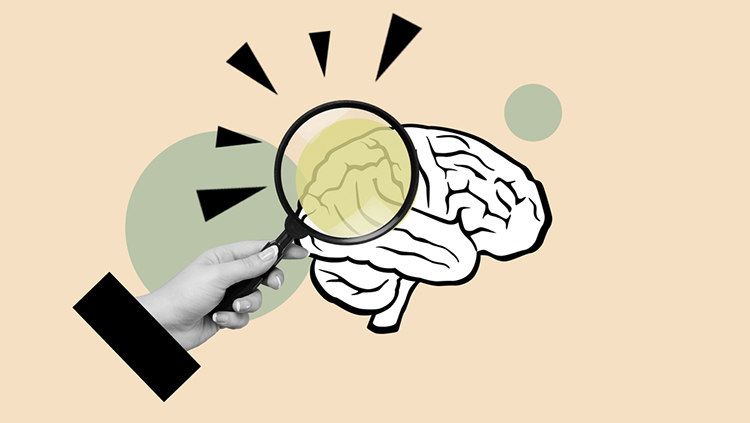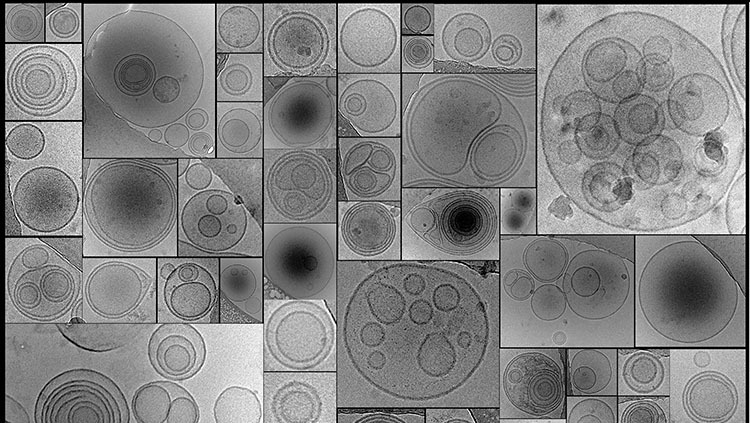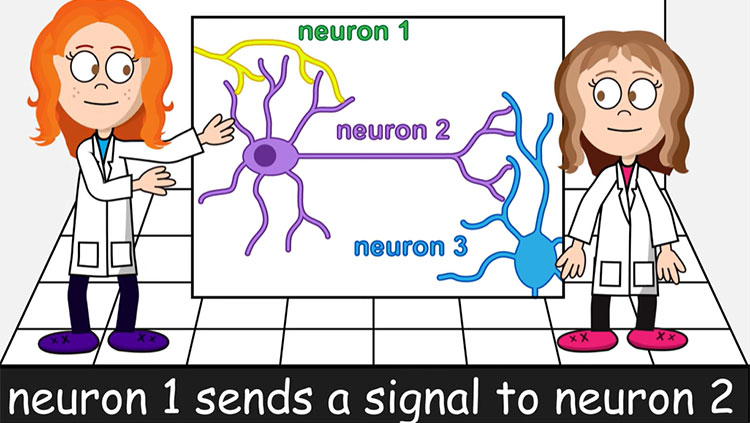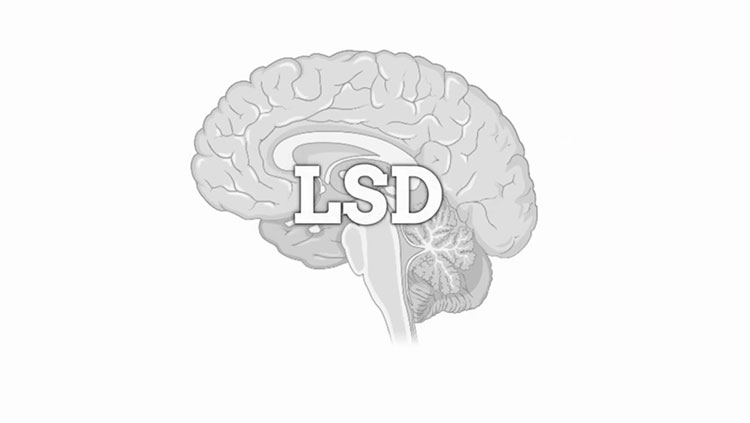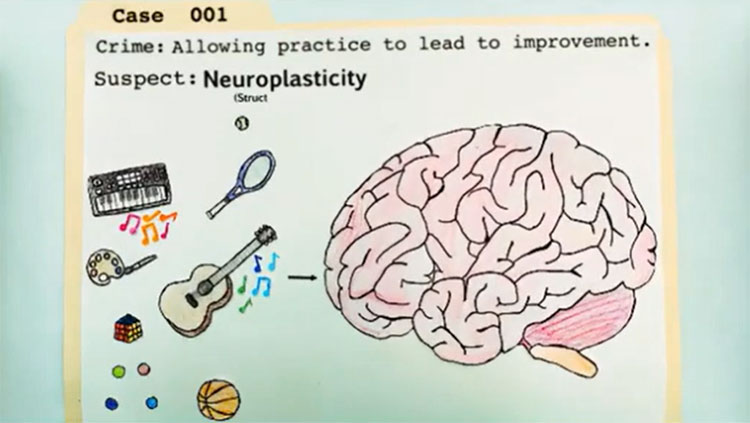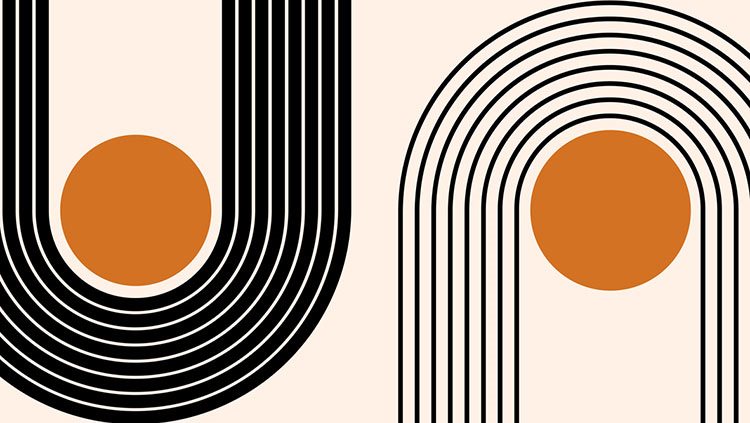Imagine How the Brain Imagines
- Published10 Jun 2014
- Reviewed22 Jan 2015
- Source BrainFacts/SfN
Beginning in childhood, we form mental images of the world that we know. Imagination refers to our ability to create and manipulate these mental images. Scientists are still unravelling the mysteries of imagination, but they believe that such mental play requires the communication of large neural webs, as this colorful video shows. Juan Pablo Robles-Alvarez, a student at the National Autonomous University of Mexico, created the video for the 2014 Brain Awareness Video Contest.
CONTENT PROVIDED BY
BrainFacts/SfN
Transcript
Hi. I’m your brain, and I know you better than anyone else in the world. Even before you were born, I was already getting to know you. But do you really know who I am? How I work? My true potential? I’ll try to explain it to you in this video. Also, I will tell you about a very common ability, the imagination, as an example of my potential.
Well, I wouldn’t want to say that I’m the most important organ you have, but let’s say that if your body were an orchestra, I would be the conductor!
Without me, there would be no order. Everything would be a mess.
I’m in your head and my weight is around 1.3kg. Not so much compared to the rest of your body. However, I get through the 60% of the glucose of your whole body. My increased metabolism is a signal of my high activity.
I am made up of tiny cells called neurons, approximately 86 billion of them. That is an 86 followed by 9 zeroes! To give you an idea, if each one of the humans who have ever lived were a neuron, we could only build one brain. All these neurons work together to coordinate everything. That might explain my big appetite.
But, how can all my neurons coordinate all together? Simple, they have a good communication system, and it is not called internet. It is called Synapsis, and it works through chemical whispers.
My neurons have arms or prolongations that approach them to neighbor cells. Very close, but without touching. At that point, synapsis occurs. The chemical talk. The words of this language are called neurotransmitters, such as dopamine, acetyl choline and serotonin, among others.
But how do the neighbor cells understand what the others are saying?
Well, with antennas or membrane receptors that recognize specific neurotransmitters. But this is not so simple, because each neuron may hear up to 1000 synapses simultaneously.
So, they process a lot of information and if that is multiplied by the number of neurons, it gives us the approximate brain connectivity, which is counted in trillions. That exceeds the connectivity of any supercomputer today.
But not all my neurons are connected together. I’m compartmentalized in an unobtrusive way. So, I have areas without defined limits that specialize in particular functions. For example, in order to see, I use the visual cortex; to hear, the hearing cortex; to move, the motor cortex is activated among other structures.
But when it comes to how I integrate all this to generate what we call imagination, first I have to define the word imagination.
Imagination is the capacity of experimenting, building or manipulating mental images. And what is a mental image? Well, let me put it this way:
Inside our brain, there is a tiny representation of the world we know. Something like a scale model of the world. In there, everything, from a chair to a face or a feeling, is a mental image. When you were a kid, you didn’t know a lot, so your mental world was limited. As you grew up, and started knowing the world, the people, the literature, your mental world started growing as well. But even if there are some limits, the mental capacity known as imagination allows us to manipulate, combine, separate and mix the mental images that we know, and eventually, jump over the walls of the mental world to go beyond, to generate new ideas or solutions to complex problems.
Imagination is the brain’s capacity that makes perception be more than just the physical stimulation of the senses. It makes it possible for us to think beyond our perceptual reality, consider our memories and the future possibilities. The most wonderful thing is that even without the sense perception, I can generate a mental reality in which you can be with anyone you want, wherever you want, anytime you want.
Einstein once said, “Imagination is more important than knowledge. Knowledge is limited, imagination limitless”.
But, what happens inside of me when I imagine?
We don’t know with certainty yet, but there are scientists researching. What we do know, is that big neural webs from different regions activate in a coordinated and temporal manner when I imagine. Scientists explain this process of imagination or manipulation of ideas with a metaphor which is very similar to the one of the mental world. It’s called “mental workspace”. Where with some tools such as memory and executive functions, it is possible to manipulate mental images as we like in order to produce new things.
But after imagination processes, people still have to make things real.
This has led to the creation of the greatest works of art, the most amazing scientific breakthroughs, the most advanced technologies, among other things.
Now you know a little bit more about me and my potential. But this is just a small demonstration. There is a lot more. Awesome, isn’t it? Now that you know all this, it is time to provide me with plenty of exercise and don’t waste me.
Spanish Transcript
IMAgINA como el cerebro IMAgINA
Hola soy tu cerebro y te conozco más que nadie en el mundo.
Incluso desde antes de que nacieras yo ya te empezaba a conocer.
Pero ¿Tú sabes quién soy en verdad?
¿Sabes cómo funciono?
¿Conoces mi verdadero potencial?
En este video trataré de explicártelo.
Además te platicaré de una actividad muy cotidiana, la imaginación, esto como muestra de mi potencial.
Bueno, no quiero decir que soy el órgano más importante que tienes, pero digamos que si tu cuerpo fuera una orquesta, yo sería el director… Sin mí, no habría orden, todo sería un desastre… Me encuentro en tu cabeza y peso en promedio 1.3 kg, poco en comparación con tu cuerpo.
Sin embargo, consumo alrededor del 60% de la glucosa de todo el cuerpo.
Me encuentro formado por pequeñas células llamadas neuronas.
Aproximadamente 86 mil millones eso es un 86 con 9 ceros.
Para que te des una idea si todos los humanos que hayan existido fueran una neurona, apenas podríamos hacer un cerebro.
Ellas trabajan juntas para coordinar todo.
¿Pero cómo es que mis neuronas pueden coordinarse para trabajar en equipo?
Sencillo, tienen un muy buen sistema de comunicación, y no es el internet.
Se llama Sinapsis, y ocurre mediante susurros químicos.
Mis neuronas tienen brazos o prolongaciones que las acercan a las otras.
Muy cerca, pero sin tocarse. Y en ese punto es donde ocurre la sinapsis.
Las palabras de este idioma son los llamados neurotransmisores. Como la dopamina, acetil colina, serotonina, entre otros.
Pero, ¿Cómo es que la célula vecina entiende lo que la otra dice?
Pues con antenas o receptores de membrana que reconocen neurotransmisores específicos.
Pero esto no es tan sencillo, pues cada neurona puede llegar a escuchar hasta 1000 sinapsis al mismo tiempo. O sea que procesan mucha información y si eso lo multiplicamos por el número de neuronas, nos da la conectividad aproximada del cerebro, en orden de billones. La cual excede al de cualquier supercomputadora de hoy.
Pero no todas mis neuronas están conectadas con todas, yo me encuentro compartimentalizado de una manera discreta.
O sea que tengo zonas, sin límites definidos, que se especializan en funciones particulares.
Por ejemplo para ver, utilizo la corteza visual, para oír, la corteza auditiva, para moverme se activa la corteza motora, entre otras estructuras.
Pero en cuanto a cómo relaciono todo esto para generar lo que llamamos imaginación, primero tengo que decirte que es la imaginación.
La imaginación es la capacidad de experimentar, construir o manipular las imágenes mentales. Y ¿qué es una imagen mental?
Bueno pues lo explicaré de este modo, dentro del cerebro hay una pequeña representación de nuestro mundo, como una maqueta, en ella, una tanto una silla como un sentimiento o una cara, todo, son imágenes mentales. Cuando eras niño, no conocías mucho, y tu mundo mental era pequeño. Conforme creciste, y empezaste a conocer el mundo, a la gente, la literatura, tu mundo mental creció. Pero aunque siempre hubo limites, la capacidad mental conocida como imaginación, nos permitió manipular, combinar, separar, mezclar las imágenes mentales que conocíamos, y eventualmente nos permitió brincar los límites e ir más allá de lo conocido para generar nuevas ideas o soluciones a problemas complejos.
La imaginación es la capacidad del cerebro que hace que la percepción sea más que la mera estimulación de los órganos de los sentidos.
Hace posible que podamos pensar más allá de nuestra realidad perceptual, considerar nuestros recuerdos y las posibilidades para el futuro.
Lo maravilloso es que incluso sin la percepción de los sentidos yo puedo generar una realidad mental, en la que puedes estar, con quien tú quieras, donde tú quieras, todo el tiempo que quieras.
Einstein una vez dijo, -La imaginación es más importante que el conocimiento, el conocimiento es limitado, la imaginación no.
Pero ¿qué sucede en mí cuando imagino?
Aún no se sabe con certeza, pero hay científicos investigándolo y lo que se sabe es que grandes redes neuronales de distintas zonas se activan de manera coordinada y temporal cuando imagino.
Los científicos tratan de explicar este proceso de la imaginación en cuanto a la manipulación de ideas con la metáfora muy similar del mundo mental, la del “espacio mental”, en el cual con ciertas herramientas como la memoria y las funciones ejecutivas es posible manipular a nuestro gusto y antojo las imágenes mentales.
Posteriormente después del ejercicio imaginativo, se tiene que llevar las nuevas ideas a la realidad.
Esto ha llevado a la creación de las más grandiosas obras de arte, los más impresionantes hallazgos científicos, las tecnologías más avanzadas, entre otras cosas.
Ahora ya sabes un poco más de mí. conoces algo de mi potencial, pero solo una pequeña parte. Hay mucho más, ¿asombroso no? Ahora, a ejercitarme y no desperdiciarme.
Also In Cells & Circuits
Trending
Popular articles on BrainFacts.org


